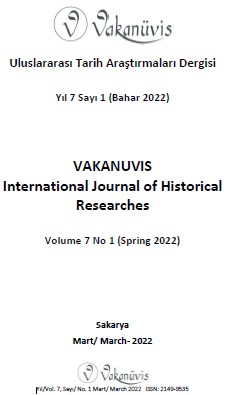V. / XI. Asırda Bir Selçuklu Veziri: Müeyyidülmülk b. Nizâmülmülk’ün Siyasî ve İdarî Etkinliği
A Seljuk Vizier in 5th/11th Century: The Political and Administrative Influence of Muayyid al-Mulk
Author(s): Efe YeşildurakSubject(s): Political history, Government/Political systems, 6th to 12th Centuries
Published by: Serkan YAZICI
Keywords: Nizam al-mulk; Muayyid al-mulk; Vizier; Seljuks; Barkiyaruq; Muhammad Tapar;
Summary/Abstract: Nizam al-mulk was a successful vizier who served the Seljuk dynasty for about 30 years. Also, he is mentioned with his sons, grandchildren, and their activities. The power and influence of one of his sons named Muayyid al-Mulk Ubayd Allah (d.494/1101) was impactful as much as his father, Nizam al-mulk. Muayyid al-mulk held an essential position in political activities both in Baghdad, the center of the caliphate, and in other regions under Seljuk rule. Nizam al-mulk made many attempts to have his son Muayyid al-Mulk become the Abbasid vizier. Despite his all effort, Muayyid al-Mulk first became the deputy of the caliph and then he was appointed as an ambassador at this time. Following this, he captured the city of Takrit in 473/1081, stayed here for a few years, and fortified the city. In 476/1084, he became the head of the divan-i insha and tuğra. At this time, he appointed Abu Sa'd Abd al-rahman b. al-Ma'mun as a “mudarris” to the Baghdad Nizamiyah madrasa which was leading a educational institution. In 477/1085, Muayyid al-Mulk was appointed by Sultan Melik Shah against the rebellious emirs such as Sharaf al-Dawla Muslim.
Journal: Vakanüvis- Uluslararası Tarih Araştırmaları Dergisi
- Issue Year: 7/2022
- Issue No: 1
- Page Range: 407-441
- Page Count: 35
- Language: Turkish

